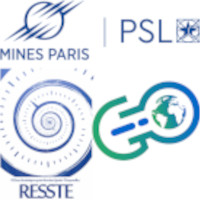This study proposes a spatio-temporal model for precipitation across multiple stations, extending the multivariate hidden Markov model used in weather generation to a spatial framework for both occurrence and intensity.
In previous works, rain occurrence at each site is modeled independently, conditioned on a shared hidden state representing a weather type. In our approach, spatial rain occurrence is modeled using a Gaussian field with a Matérn covariance structure, thresholded at each location into a Bernoulli variable based on the local rain probability. We incorporate this spatial model in the hidden Markov framework, with the aim of identifying interpretable states, such as those characterized by lower rain probability or higher spatial correlation. Additionally, we incorporate periodic parameterizations to capture seasonal patterns more effectively, rather than fitting separate models for each month. The rain quantity is modeled conditionally to the weather state using appropriate distributions.
Model parameters are estimated using composite pairwise likelihood and the EM algorithm. Simulations from the fitted model are compared to observed data using several metrics such as the rain occurrence ratio (ROR), which represents the daily proportion of stations experiencing rainfall.
The model is applied to 37 weather stations in France, using 51 years of daily precipitation data. Results from the spatial model indicate a higher estimated spatial range in winter compared to summer. This aligns with meteorological knowledge that attributes winter rainfall to large-scale phenomena and summer rainfall to smaller-scale processes. The obtained weather types are well-separated and can be linked to large-scale circulation type. Our model allows the generation of rainfall with realistic weather patterns reproducing key quantities such as droughts over France.

 PDF version
PDF version
